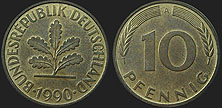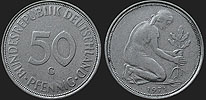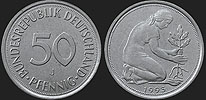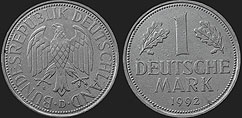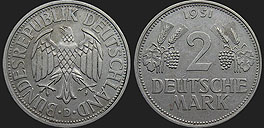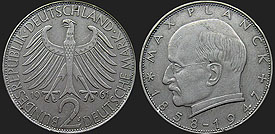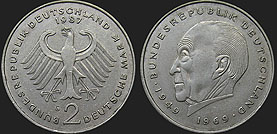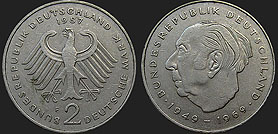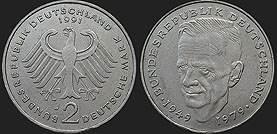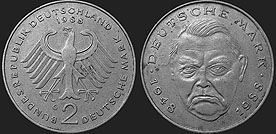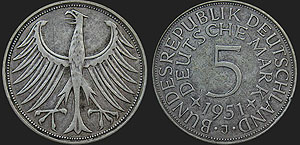GERMANY (1948-2002) - German mark [DEM]
1 Mark = 100 Pfennig
Germany devastated after the World War II was in a difficult economic situation. Old currencies Rentenmark [DEN] and Reichsmark [DER] were never abolished, so they were technically still circulating together with German Allied Mark [DEA], but people found barter exchange more secure, making cigarettes the most common currency. Having learnt the lesson on reasons for hyperinflation of 1923, Bank Deutscher Laender (Bank of the German States) began preparations for an economic reform. It was introduced on Sunday, June 20th, 1948 and German inhabitants had learned about it only 3 days earlier from the radio. The father of the reform Ludwig Erhard announced additionally that the state control over prices was abolished. The new currency Deutsche Mark (German mark) [DEM] was handed in to all Germans in amount of 60 DEM per person, additionally their salaries were initially limited to another 60 DEM. People's savings were exchanged from DEN or DER to DEM in ratio 10:1, but half of it was meant to be temporaly frozen on blocked accounts. Four months later 70% of all the frozen savings was simply cancelled by the state, so the exchange ratio appeared to be rather 10:0.65. The reform turned many family fortunes into peanuts. This was a real fresh start for German economy.
coins catalogue :: katalog monet :: münzkatalog :: catalogue de monnaies :: catálogo de monedas :: catalogo monete :: каталог монет :: κέρματα κατάλογος :: COINZ.eu
© 2010-2025 :: Adam Kubicki :: COINZ.eu :: All rights reserved.







